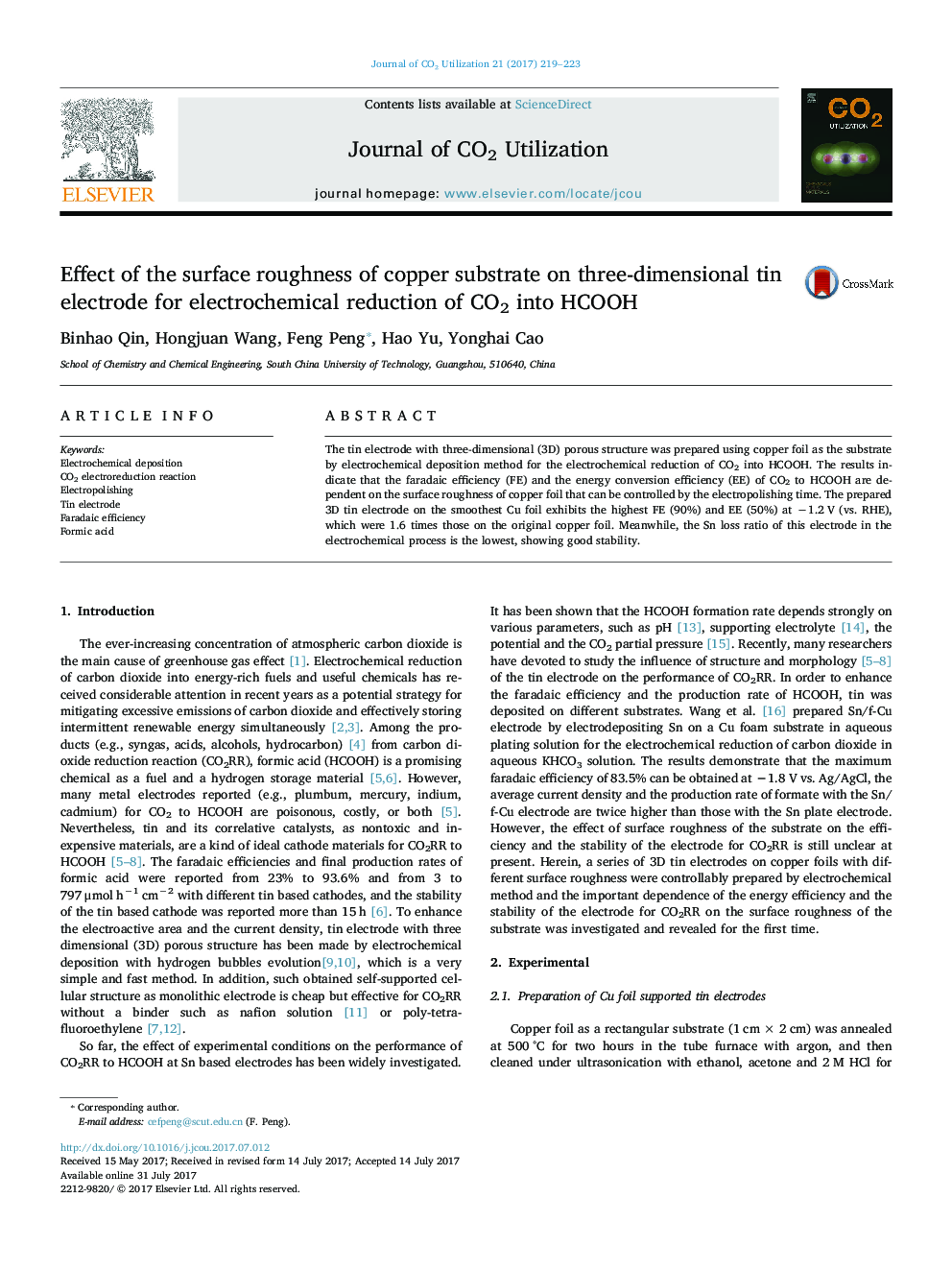| کد مقاله | کد نشریه | سال انتشار | مقاله انگلیسی | نسخه تمام متن |
|---|---|---|---|---|
| 6456054 | 1419841 | 2017 | 5 صفحه PDF | دانلود رایگان |
- The surface roughness of copper foil can be controlled by electropolishing time.
- Three-dimensional tin electrode on polished foil is prepared by electrochemical deposition.
- Energy efficiency for electroreduction of CO2 to HCOOH is dependent on roughness of foil.
- The important dependence of electrode stability on foil roughness is revealed.
- Tin electrode on the smoothest foil Exhibits 90% of faradaic efficiency to HCOOH.
The tin electrode with three-dimensional (3D) porous structure was prepared using copper foil as the substrate by electrochemical deposition method for the electrochemical reduction of CO2 into HCOOH. The results indicate that the faradaic efficiency (FE) and the energy conversion efficiency (EE) of CO2 to HCOOH are dependent on the surface roughness of copper foil that can be controlled by the electropolishing time. The prepared 3D tin electrode on the smoothest Cu foil exhibits the highest FE (90%) and EE (50%) at â1.2Â V (vs. RHE), which were 1.6 times those on the original copper foil. Meanwhile, the Sn loss ratio of this electrode in the electrochemical process is the lowest, showing good stability.
264
Journal: Journal of CO2 Utilization - Volume 21, October 2017, Pages 219-223
